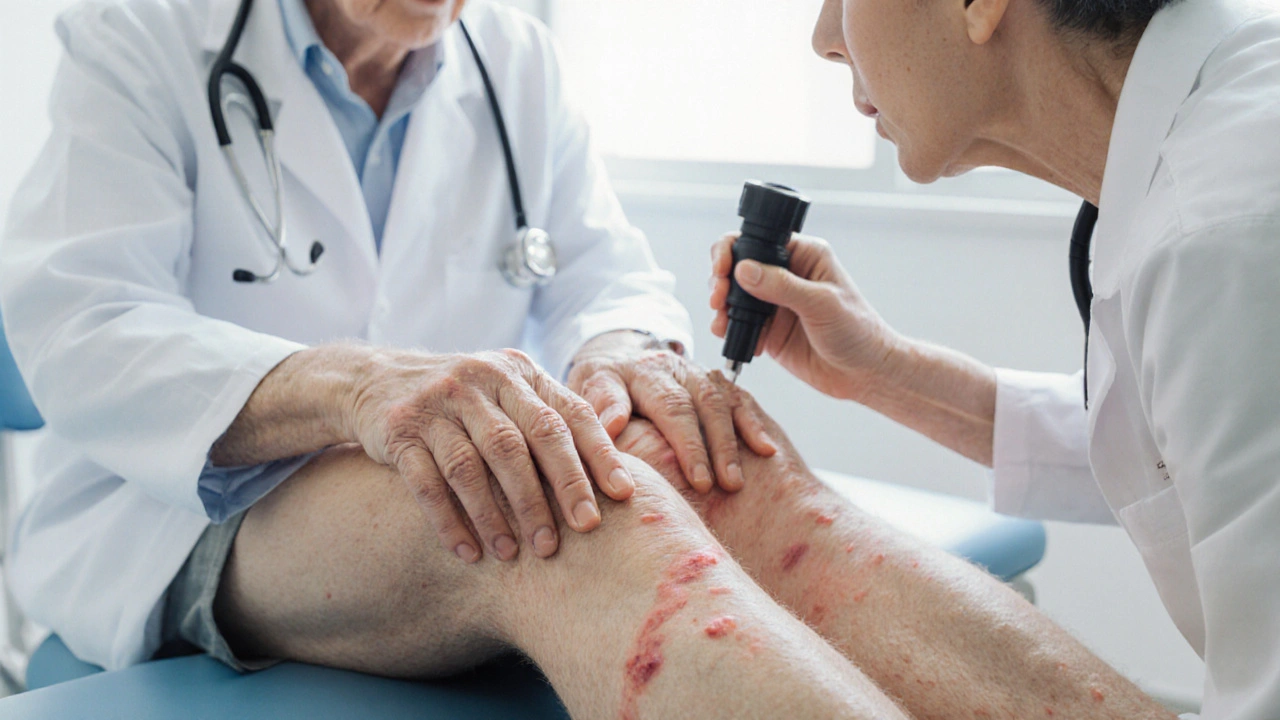Scabies: Causes, Treatments, and What You Need to Know
When your skin won’t stop itching—especially at night—it might not be dryness or an allergy. It could be scabies, a highly contagious skin infestation caused by the human itch mite. Also known as human itch mite infestation, scabies isn’t about poor hygiene. It’s about contact. The mite, Sarcoptes scabiei, burrows into the top layer of skin, lays eggs, and triggers a fierce allergic reaction that makes you scratch nonstop. This isn’t just an annoyance. Left untreated, scabies can spread fast—through close physical contact, shared bedding, or even prolonged hugging.
What makes scabies tricky is that symptoms take weeks to show up in first-time cases. You might not realize you’ve caught it until your whole family is itching. And while the mites live on people, they don’t jump or fly. They crawl. That’s why it’s common in crowded places: dorms, nursing homes, childcare centers. Permethrin, a topical cream that kills scabies mites and their eggs is the first-line treatment. It’s safe, effective, and used by doctors worldwide. But it’s not the only option. Other treatments like ivermectin pills or sulfur ointments work when permethrin fails—or when someone can’t use it due to pregnancy or sensitive skin.
Here’s the thing: treating the person isn’t enough. You have to treat the environment too. Wash all clothes, towels, and bedding used in the last three days in hot water and dry on high heat. Items you can’t wash? Seal them in plastic bags for at least 72 hours. Mites can’t survive long without human skin. And if one person in your house has it, everyone should be treated at the same time—even if they’re not itching yet. Delaying means you’re just restarting the cycle.
Some people confuse scabies with eczema, psoriasis, or even bug bites. But there’s a pattern: intense nighttime itching, tiny burrows between fingers, around wrists, or in the armpits, and rashes that look like pimples or scaly patches. Kids often get it on their palms and soles. Adults usually see it in skin folds. If you’ve tried lotions, antihistamines, and steroid creams and nothing helps, it’s time to consider scabies. A doctor can confirm it with a quick skin scraping.
There’s no magic cure, but scabies is one of the most treatable skin conditions—if you act fast and follow through. The goal isn’t just to stop the itch. It’s to break the chain. That means knowing how it spreads, using the right treatment, and cleaning your space. This collection of posts gives you real-world advice on what works, what doesn’t, and how to avoid mistakes that lead to repeat outbreaks. You’ll find comparisons of treatments, tips for families, and what to do when the itching won’t quit—even after treatment. No fluff. Just what you need to get back to normal.

Skin Parasites: Their Growing Impact on the Medical Community
Caspian Mortensen Oct, 5 2025 13Explore how skin parasites like scabies, hookworm, and myiasis affect diagnosis, treatment, and public health, and discover the medical community's response and future strategies.
More Detail